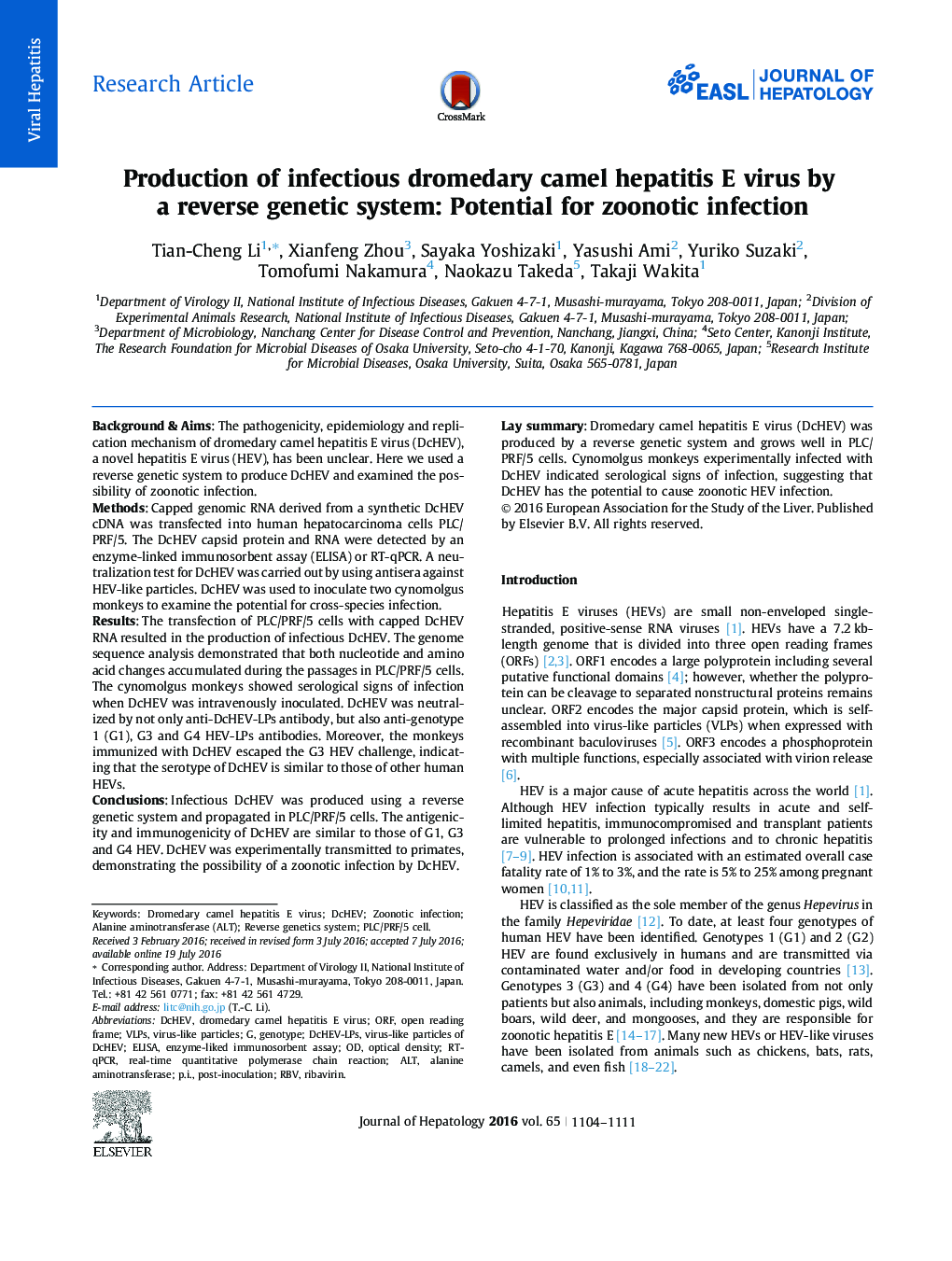| کد مقاله | کد نشریه | سال انتشار | مقاله انگلیسی | نسخه تمام متن |
|---|---|---|---|---|
| 5660484 | 1407491 | 2016 | 8 صفحه PDF | دانلود رایگان |

Background & AimsThe pathogenicity, epidemiology and replication mechanism of dromedary camel hepatitis E virus (DcHEV), a novel hepatitis E virus (HEV), has been unclear. Here we used a reverse genetic system to produce DcHEV and examined the possibility of zoonotic infection.MethodsCapped genomic RNA derived from a synthetic DcHEV cDNA was transfected into human hepatocarcinoma cells PLC/PRF/5. The DcHEV capsid protein and RNA were detected by an enzyme-linked immunosorbent assay (ELISA) or RT-qPCR. A neutralization test for DcHEV was carried out by using antisera against HEV-like particles. DcHEV was used to inoculate two cynomolgus monkeys to examine the potential for cross-species infection.ResultsThe transfection of PLC/PRF/5 cells with capped DcHEV RNA resulted in the production of infectious DcHEV. The genome sequence analysis demonstrated that both nucleotide and amino acid changes accumulated during the passages in PLC/PRF/5 cells. The cynomolgus monkeys showed serological signs of infection when DcHEV was intravenously inoculated. DcHEV was neutralized by not only anti-DcHEV-LPs antibody, but also anti-genotype 1 (G1), G3 and G4 HEV-LPs antibodies. Moreover, the monkeys immunized with DcHEV escaped the G3 HEV challenge, indicating that the serotype of DcHEV is similar to those of other human HEVs.ConclusionsInfectious DcHEV was produced using a reverse genetic system and propagated in PLC/PRF/5 cells. The antigenicity and immunogenicity of DcHEV are similar to those of G1, G3 and G4 HEV. DcHEV was experimentally transmitted to primates, demonstrating the possibility of a zoonotic infection by DcHEV.Lay summaryDromedary camel hepatitis E virus (DcHEV) was produced by a reverse genetic system and grows well in PLC/PRF/5 cells. Cynomolgus monkeys experimentally infected with DcHEV indicated serological signs of infection, suggesting that DcHEV has the potential to cause zoonotic HEV infection.
172
Journal: Journal of Hepatology - Volume 65, Issue 6, December 2016, Pages 1104-1111